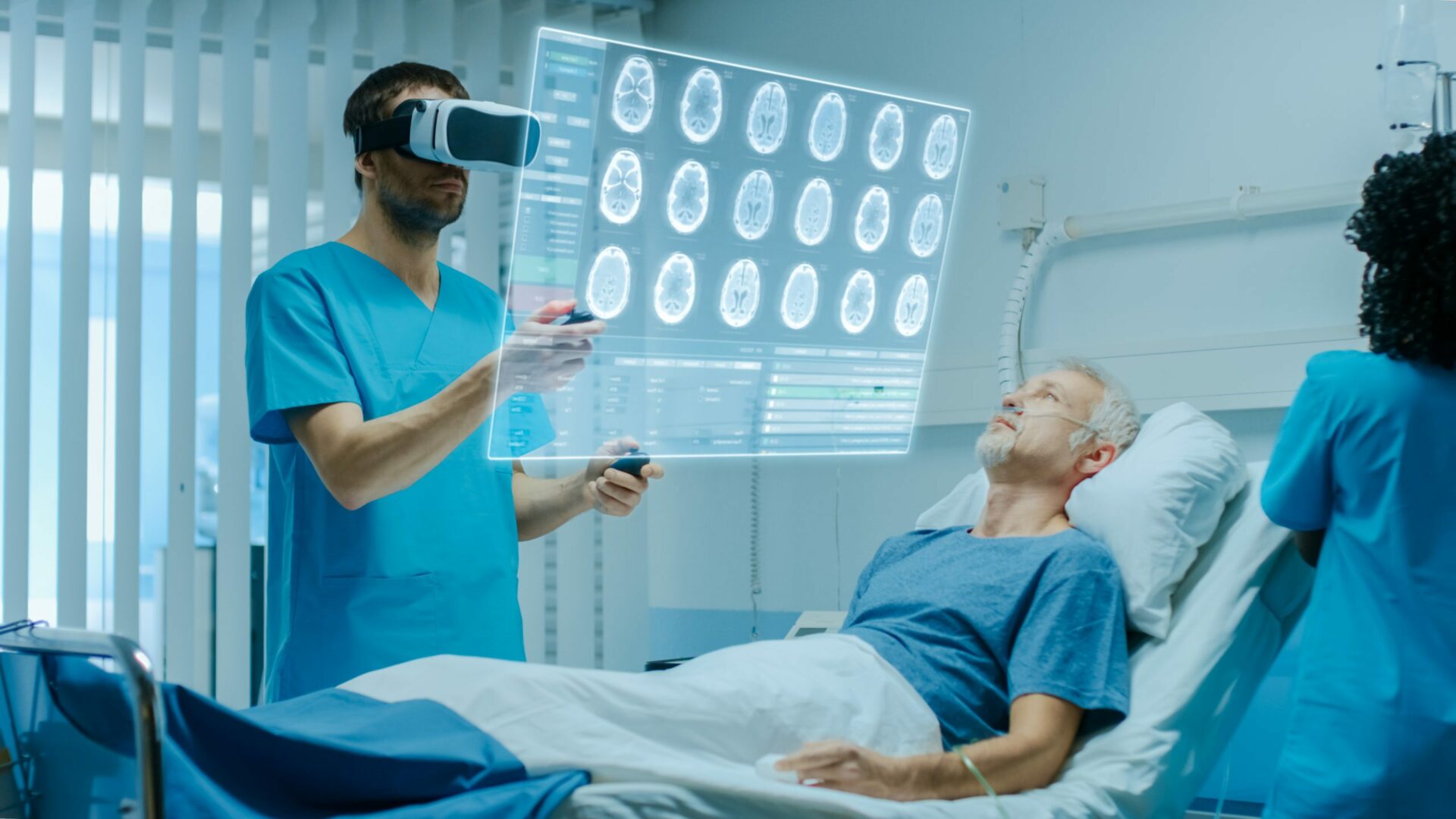Alon Grinshpoon is CEO and founder of echoAR (www.echoAR.xyz), a cloud platform for augmented reality (AR) that provides tools and network infrastructure to help developers & companies quickly build and deploy AR apps and content.
Practical magic exists and we all call it Augmented Reality (or AR). It is the definitive new medium to experience content in the real world. Through the magic of AR, around 200 million people use face filters every day1 to communicate with friends and 150 million more interact with digital monsters around the world each month2.
As with any new form of content, the technology that backs it has to evolve. In this case, it’s wireless networks. The second generation (2G) of mobile communications introduced texting and enabled us to send SMS. With 3G we got wireless internet access to share pictures and browse websites. With the upgrade to 4G LTE, we have high-definition videos on demand, allowing us to binge watch shows or have a video conference on the go. So what’s next?
Similarly to how we transitioned from single-dimensional (1D) content (such as text) to 2D content (such as images and videos), now is the time for 3D content – through AR. And with that – the time for 5G, the next generation of wireless communications built with applications like 3D content in mind, has arrived.
Judging by its predecessors (4G made mobile video consumption skyrocket3), 5G technology will have a tremendous effect on AR. But what makes 5G and AR such a perfect match?
1. More Data
AR experiences rely on 3D models, volumetric data, 360° videos, and animations. All are new types of content. File formats, sizes, and platform specifications vary widely. As opposed to just one image or video file, an AR experience can consist of multiple 3D files, each with multiple texture files or animations. In addition, forms of 3D video, such as stereoscopic or 360°, can introduce higher frame rates (90+ frames per second), resolutions (8K), and high dynamic range (HDR), which are much larger in size than past file formats.
Fortunately 5G offers an improved download capacity. Each 5G cell can reach 20Gb per second, which can result in native user experiences of over 100Mb per second on mobile. Compared to 4G this is a 100x improvement in traffic capacity that no doubt can support larger amounts of information. At echoAR where we provide tools and network infrastructure for developers and companies building AR apps and content, we see those data influxes daily. Customers are using large photorealistic 3D models to visualize buildings in real-life sizes, interact with life-like holograms of patient anatomy, and bring art to life at a never-before-seen scale. When 5G rolls out we will be able to provide them with a way to stream more data with ease.
2. Less Time
5G improves the time it takes for data to travel to and from your device. Latency, the round trip time for a data packet, on 5G is 1 millisecond compared to 10 milliseconds on 4G. This means that you will be able to consume 3D content and send data back 10 times faster. This also means that AR head-worn displays will be able to show video or stream content with no visible lag, which can eliminate cybersickness and a poor user experience. Developers using our cloud solution to push real-time updates to their app or creators updating new content will rejoice as 5G will allow them to sync data much faster thus making AR experiences much more immersive.
3. More Users
AR experiences such as Pokemon GO or Harry Potter: Wizards Unite are built for many users to play simultaneously in similar geographic locations. Luckily, with 5G the amount of connections a network can support at any given moment is much larger than with 4G. 5G allows for a density of 1 million devices per square kilometer as opposed to 100 thousand on 4G. This means that you will be able to interact and stay connected even with 999,999 people around you. While 4G experiences like Pokemon GO are extremely entertaining, they usually only allow you to see a small 3D asset placed in the real world that only you can interact with. This is just the tip of the iceberg when it comes to realizing the current potential of AR. 5G infrastructure will fast-track realizing that potential by enabling global-scale, multi-user, multi-device experiences. 5G will allow cloud solutions to better synchronize 3D data across phones, headsets, and browsers simultaneously and allow companies to engage more users at the same time through the cloud.
4. Much Cooler
Today’s processing and rendering of AR remains on the device rather than the edge/cloud, which can cause overheating. 5G speed and bandwidth will allow migrating AR processing away from your phone, keeping it cool, and conserving battery life. While current cloud technology already takes format conversions, file compressions, 3D optimizations, real-time updates, and analytics off your device, 5G can help tackle remaining bottlenecks, such as on-device rendering, and allow for additional server-side processing and data streaming that 4G speed seems inadequate for.
5. Cheaper App Development
Niantic, the giant gaming company behind Pokemon GO, has teamed up with Deutsche Telekom4 to test 5G-delivered augmented reality games in four German data centers. But if you are a developer in your mom’s basement who wants to create the next Pokemon GO, you probably lack the resources to build it over 5G. The sooner 5G is deployed and democratized, the sooner we will see meaningful global-scale AR content overlaying the real-world. Currently our backend infrastructure enables customers to build, ship, and scale AR apps. With 5G at their disposal, teams will be able to create even more scalable apps and reach even more users around the world.
So what’s next? The good news is that your phone is probably already AR-enabled5. This is due to the fact that every major mobile phone company is shipping AR as a core standard feature. These days you can also treat yourself to an AR headset. When so many consumers are already engaged, enterprises follow. For example, the U.S. Army is spending $480 million dollars for soldiers to train with AR headsets6, and companies are investing billions to build more7.
The bad news is that we currently lack the requisite 5G infrastructure, and while companies are building out and starting to turn on 5G in various cities, it’s not widespread yet.
What can you do to advance 5G + AR? For starters, you can buy AR/5G-enabled phones and devices to amplify the commercial pull by consumers, download AR apps to boost their adoption, and send feedback on how to improve them, or reach out to your local representative asking for 5G integration in your area. But most importantly, start practicing magic – build AR apps, and build them to scale even on 4G (you can use echoAR to do so today). Build experiences that push the limits of the network so when 5G rolls around to your area – you are ready.
Learn more:
- https://thehill.com/hilltv/boundless/424340-tech-ceo-says-5g-will-drastically-improve-augmented-reality
- https://www.qualcomm.com/media/documents/files/augmented-and-virtual-reality-the-first-wave-of-5g-killer-apps.pdf
- https://www.cmswire.com/digital-workplace/how-5g-will-impact-augmented-and-virtual-reality-use/
About Alon Grinshpoon and echoAR:
Alon is CEO and founder of echoAR (www.echoAR.xyz), a cloud platform for augmented reality (AR) that provides tools and network infrastructure to help developers & companies quickly build and deploy AR apps and content.
echoAR is backed by Techstars and received grants from Y Combinator, Verizon, NYC Media Lab, won the DevProject Award 2019, named AR/VR finalists for SXSW 2020, named among the 2019 Most Fundable Companies, named one of the Top 25 finalists in Sir Richard Branson’s Extreme Tech Challenge (XTC) 2019, and was featured on The Hill and Bold TV.
echoAR and Verizon 5G Labs in collaboration with NYC Media Lab have launched an AR+5G solution as part of the Verizon 5G Challenge in NYC. echoAR joined a group of NYC-based startups and university faculty and student to prototype 5G solutions that can bring ideas to life for local retailers. With Verizon’s cutting-edge 5G capabilities, echoAR created and deployed an AR+5G application for the retail ecosystem.
Alon received his MSc in Computer Science from Columbia University specializing in computer graphics, virtual and augmented reality, and human-computer interaction. Alon received his BSc in Computer Science and Electrical Engineering from Tel Aviv University specializing in cloud technology, computer networks, and cyber security.
Alon is a former Mellanox engineer, graduate researcher at the Computer Graphics and User Interfaces Laboratory of Columbia University, and research and teaching assistant in the fields of computer networks and distributed cloud networks.
Alon is a Techstars alum, NYC Media Lab alum, a Startup Leadership Program (SLP) fellow, and a member of the Virtual World Society. Alon is a speaker on emerging technologies and has given talks at major AR/VR tech conferences around the world.





